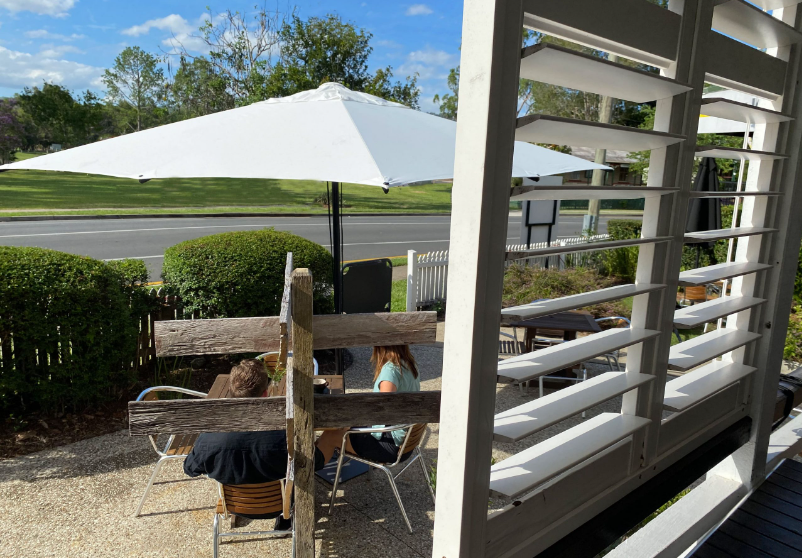When you want to buy a good quality patio umbrella, you must consider factors like fabric, colour, construction, etc. There is, however, another crucial aspect that you must take into account — the outdoor umbrella’s wind resistance and rating. Although this factor might not come under any warranty, it is extremely important that your umbrella has a high wind-resistance rating, especially if you live in a windy area.
The wind resistance can also tell you a lot about the heavy-duty commercial umbrella’s durability and strength.
However, we must warn you that if the wind velocity increases suddenly, you must close your umbrella irrespective of whether the product has a wind resistance rating or not. This is because a strong gust of wind can topple your umbrella or blow away your umbrella easily. This could also be a cause of major embarrassment if you own a commercial enterprise like a café or a restaurant. Ideally, you should close your umbrella if the wind speed goes above 15-20 mph.
In this blog, we will discuss issues related to the wind that can bother your café umbrella in Australia. Read on…
Speed of wind: We must tell you that no umbrella in this world can withstand strong winds. So if you are concerned about your umbrella getting damaged or toppled due to high wind, you should know how much it can resist. Understanding this factor will let you decide the best time when you should close and store it away.
Typically, the National Weather Service announces wind advisory under two conditions:
• There is a chance of sustained winds of 30 mph for an hour
• There is a possibility of frequent gusts of wind at 45 mph in the next 36 hours
However, it does not mean that wind speeds less than these are not damaging enough. As already mentioned, wind speed between 15-20 mph can be considered breezy and your patio umbrella should be fine. But it definitely gets tricky if the wind speed ranges between 20 and 30 mph.
Our advice is that you should not be keeping your outdoor umbrella open when the wind speed is 20 mph or higher.
During rain or a storm, the high wind can rip through the ribs inside the umbrella. The lightweight materials used in manufacturing the product make it susceptible to getting flipped or blown away. It damages the fabric too.
In fact, if you are using a lightweight umbrella, chances are that both the fabric and the frame can be pulled and torn away. At the same time, though, it does not mean that a heavy duty commercial umbrella is safe. Strong winds can cause severe damage to it as well.
How to prevent your umbrella from getting damaged?
If you see that the wind speed is high, you should not be erecting a patio umbrella in the first place. However, if you have installed the umbrella, then it is better to use a wind-resistant product. Even though these umbrellas may look similar to a regular patio umbrella, the construction is different. They generally operate by controlling the airflow through the canopy of the umbrella.
Typically, the canopy has vents in it that can distribute the air. As the wind rushes through the umbrella, the vents can spread some of the air flow under the canopy. This way, the wind can flow around and underneath the fabric, causing less damage.
Additionally, your umbrella should also have a robust frame and strong base that would not be easily blown away and hold the umbrella upright.
Wind rating of an umbrella:
Wind rating signifies that your umbrella has undergone comprehensive testing for wind resistance. It also means that your café umbrella in Australia will not quickly get damaged and last longer.
Generally, manufacturers may use one or all of the following methods to test wind resistance of an umbrella:
1. Software Modelling: These days, advanced software and technology are used along with machine learning to simulate and create scenarios for testing purposes.
2. Wind tunnel: Wind tunnel tests are used to check the umbrellas’ aerodynamics. Similar to software modelling, this is also a simulated procedure done in a controlled environment.
3. Real-world situations: Despite the simulations, there is nothing better than real-world testing to check the unpredictability of nature. So umbrellas are used in various locations and weather conditions to see how well they would perform.
Conclusion
If you want to buy a patio umbrella, we would assume that you will go for a product with a high wind rating. However, we would suggest you not to put the umbrella through extreme situations. Otherwise, the umbrella can break or tear when pushed beyond its limits. So it is always a good practice to take the umbrella down if the wind gets too uncomfortable. If you can get these basic things right and take good care of the product, the umbrella can last really long.




